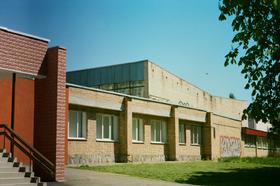For the 2025-26 school year, there is 1 public preschool serving 460 students in Raymond, MS.
Raymond, MS public preschools have a diversity score of 0.55, which is less than the Mississippi public preschool average of 0.60.
Minority enrollment is 68% of the student body (majority Black), which is more than the Mississippi public preschool average of 55% (majority Black).
Best Public Preschools in Raymond, MS (2025-26)
School
(Math and Reading Proficiency)
(Math and Reading Proficiency)
Location
Quick Facts
Rank: n/an/a
417 Palestine Street
Raymond, MS 39154
(601) 857-0213
Raymond, MS 39154
(601) 857-0213
Gr: PK-8 | 460 students Student-teacher ratio: 11:1 Minority enrollment: 68%
Raymond, Mississippi Public Schools (Closed)
School
Location
Quick Facts
560 Port Gibson St.
Raymond, MS 39154
(601) 857-5006
Raymond, MS 39154
(601) 857-5006
Gr: 7-8 | 93 students Student-teacher ratio: 8:1 Minority enrollment: 73%
417 Palestine Road
Raymond, MS 39154
(601) 857-0213
Raymond, MS 39154
(601) 857-0213
Gr: PK-6 | 377 students Student-teacher ratio: 11:1 Minority enrollment: 67%
Frequently Asked Questions
How many public preschools are located in Raymond, MS?
1 public preschools are located in Raymond, MS.
What is the racial composition of students in Raymond?
Raymond public preschools minority enrollment is 68% of the student body (majority Black), which is more than the Mississippi public preschools average of 55% (majority Black).
Recent Articles

Texas Schools Enrollment Trends & Policy in 2025
Latest data and policy changes on Texas public school enrollment growth, funding, and virtual education in 2025.

Financial Aid & Hidden Costs in Public Schools
Learn about financial aid and hidden costs in public schools. Discover what parents should budget for beyond tuition-free education.

NYC Schools Still Most Segregated in 2025
Despite reforms, New York City schools remain the most segregated in the U.S. in 2025. Here鈥檚 what parents and educators need to know.
